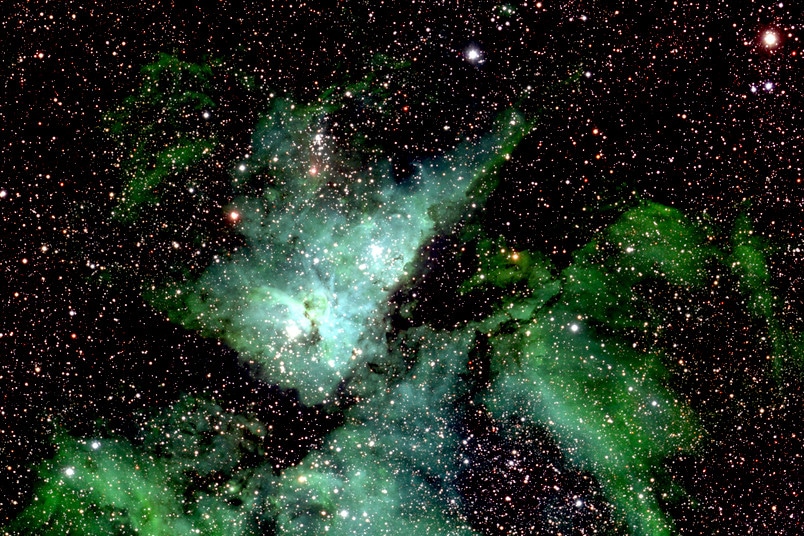Jun 10 2019
Bochum-based scientists from the Cluster of Excellence Ruhr Explores Solvation (Resolv), along with cooperation partners from Nijmegen, have investigated how to interact with water molecules at very low temperatures. With the help of spectroscopic analyzes and computer simulations, they are examining the question of whether hydrochloric acid (HCl) does or does not discharge its proton in interstellar space. The hydrochloric acid along with water molecules.
 The team at the Cluster of Excellence has researched chemistry in interstellar space. (©RUB, Department of Astrophysics)
The team at the Cluster of Excellence has researched chemistry in interstellar space. (©RUB, Department of Astrophysics)
The team led by Professor Martina Havenith, Chair of Physical Chemistry II, and Professor Dominik Marx, Chair of Theoretical Chemistry, from Ruhr-University Bochum, along with the team headed by Dr. med. Britta Redlich from Radboud University, Nijmegen, reported their findings on June 7th, 2019.
Understanding how complex molecules were formed
If hydrochloric acid is exposed to water molecules under regular conditions, such as at room temperature, the acid instantly dissociates: it discharges its proton (H+), and one chloride ion (Cl-) is left behind. Kelvin, that is, below -263.15 °C.
We would like to know the same acid-alkali chemistry in interstellar space. The results are crucial for understanding how more complex chemical molecules formed in space — long before the first precursors of life came into existence.
Martina Havenith, Professor and Speaker for Cluster of Excellence Resolv, Chair of Physical Chemistry II, Ruhr-University Bochum
So as to reproduce the very low temperatures in the lab, the scientists had the chemical reactions occur in a droplet of superfluid helium. They track the processes using a dedicated type of infrared spectroscopy, which can detect molecular vibrations having low frequencies. A laser with particularly high brightness, as it is available in Nijmegen, what is required for this. Computer simulations allowed the researchers to deduce the experimental results.
It comes down to the order
Primarily, the scientists added four water molecules, one after the other, to the hydrochloric acid molecule. The hydrochloric acid dissociated in this process: it gave up its proton to a water molecule, and a hydronium ion was formed. The remaining chloride ion, the hydronium ion, and the three other water molecules developed into a cluster.
However, the scientists said: "The hydrochloric acid molecule did not dissociate; the proton remained bonded to the chloride ion. So to speak,” recapitulates Martina Havenith.
Chemistry in space is not simple
The scientists accept that it signifies the standard principle of chemistry under ultracold environments. “Chemistry in space is by no means simple; it might even be more complex than chemistry under planetary conditions,” says Dominik Marx. In the end, it relies not on the mixing ratios of the reacting substances but on the order in which they are mixed with each other. “This phenomenon needs to be considered in future experiments and simulations under ultra-cold conditions,” says the scientist.